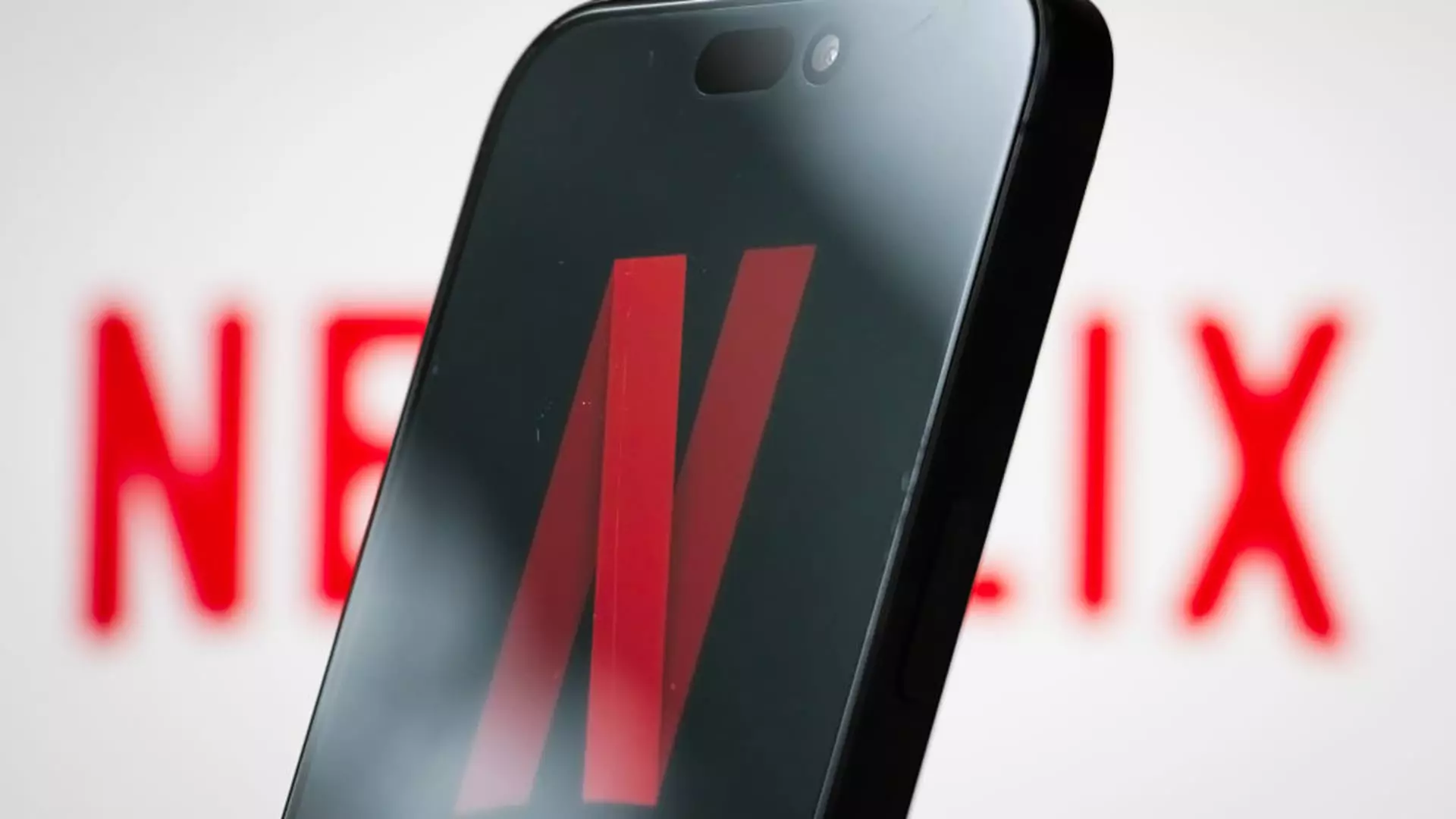Netflix has recently unleashed a transformative redesign of its homepage, ostensibly to enhance user experience and simplify navigation. But let’s not kid ourselves; this overhaul is much more than just a fresh coat of paint. It’s a strategic move rooted in consumer psychology, aimed at creating a more intuitive and engaging environment for viewers bombarded by countless alternatives. With an arsenal of new features—including real-time recommendations based on user preferences and enhanced accessibility through visually prominent shortcuts—Netflix is doubling down on its mission to keep us glued to our screens amidst intense competition.
Vertical Video: The Future of Engagement
A striking feature of this redesign is the introduction of a vertical video feed, a nod to the consumption habits popularized by platforms like TikTok and Instagram. While it may seem like a frivolous adaptation, this decision demonstrates a deep understanding of how modern consumers interact with content on mobile devices. Netflix’s Chief Product Officer, Eunice Kim, hit the nail on the head by stating that “swiping through a vertical feed on social media apps is an easy way to browse video content.” In an age where instant gratification reigns supreme, Netflix is aligning with our desire for a quick, seamless browsing experience.
The vertical feed is not just about aesthetic; it’s about significantly improving the user interface. The capacity to save or share clips effortlessly is a game-changer. It encourages social sharing and word-of-mouth, driving organic growth while enhancing viewer engagement. This kind of dynamic interface is vital for a company trying to defend its market share against aggressive competitors like Disney+ and Max.
AI: The Edge of Personalization
Moreover, Netflix’s partnership with OpenAI indicates an exciting leap into the realm of generative artificial intelligence. By integrating AI into its platform, Netflix aims to revolutionize search functionalities. Imagine typing in specific phrases to find shows that fit your current mood or vibe, without having to scroll endlessly through algorithms. This personalized touch could elevate Netflix’s standing as the go-to entertainment service, effectively making navigating the service as enjoyable as the content itself.
Another pivotal point is Netflix’s enhanced focus on real-time recommendations. By adapting to users’ moment-to-moment preferences, Netflix is potentially creating a bespoke viewing experience that feels tailored to our psychological needs. However, this begs the question of whether an algorithm-driven experience will truly grasp the nuances of human emotion. Relying heavily on AI raises concerns about the depth of connection viewers may have with their viewing choices. It could draw people into an almost echo-chamber-like experience instead of exposing them to diverse content.
Competitive Pressure: The Streaming Wars Intensify
Let’s not overlook the backdrop against which these changes are taking place. The streaming landscape is increasingly crowded, making it imperative for Netflix to innovate continuously—not just to attract new subscribers but to retain those they already have. The 300 million paid memberships reported earlier this year may seem impressive, but they come on the tail end of a growth plateau that had many analysts worried. In response, Netflix has not shied away from radical strategies like the introduction of an ad-supported model and a crackdown on password sharing. These maneuvers indicate an understanding that stagnation in a hyper-competitive market can spell doom, pushing Netflix to evolve or risk irrelevance.
As the streaming wars heat up, every little change counts. Netflix’s decision to ensure its user experience doesn’t fall behind rivals like Warner Bros. Discovery’s Max and Disney+ is commendable. However, one can’t help but wonder if these updates, while bold, can genuinely deliver the holistic satisfaction that an iconic streaming brand should offer.
The Cultural Shift Towards Content Consumption
There’s an underlying societal shift brewing; content consumption patterns are changing rapidly and the competition isn’t just about flashy features—it’s about understanding culture. Netflix’s grasp of viewer behavior and its strategic adjustments reflect a deep understanding of modern media consumption. However, embracing such rapid pivots also demands criticism—what happens to content quality when the focus is predominantly on user engagement? Will the richness of storytelling be sacrificed for the sake of quick swiping and reactive algorithms?
In the quest for greater user engagement, there’s a risk that companies might overlook the essence of storytelling that made them popular in the first place. If Netflix can balance its intelligent use of feature technology while maintaining a commitment to quality content, it may well differentiate itself from competitors in a way that keeps its audience consistently captivated.

